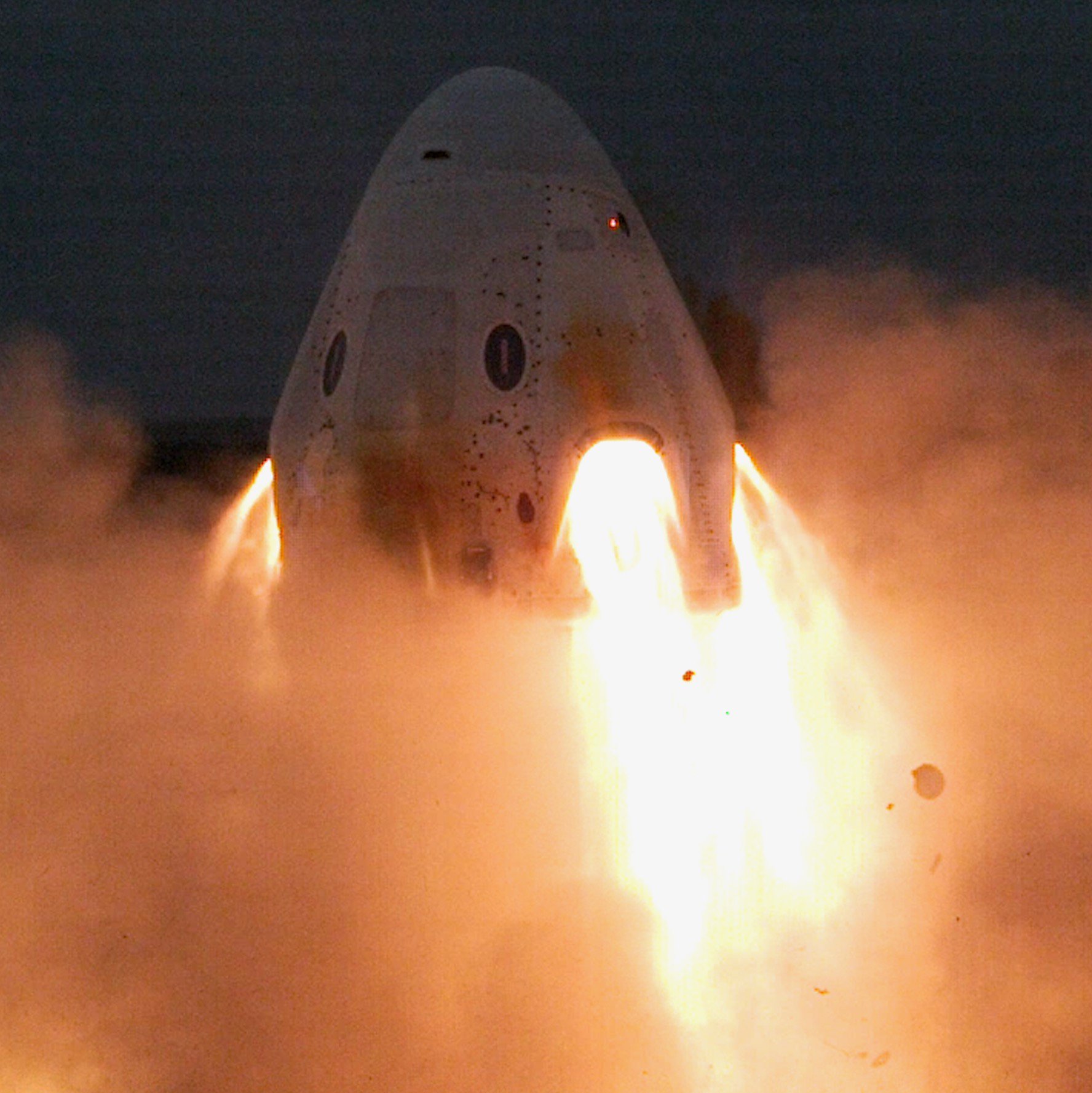SpaceX's Crew Dragon In-Flight Abort Test Will Now Launch No Earlier Than Jan. 11
SpaceX will now launch a major in-flight abort system test of its Crew Dragon spacecraft for astronauts no earlier than Jan. 11, a week later than previously announced.
The uncrewed test flight, called an In-Flight Abort Test, will test a vital safety system designed to protect astronauts during a launch emergency. It was initially expected to liftoff sometime this month, but NASA announced last week that the mission would launch no earlier than Jan. 4. That target has since slipped another week.
"NASA and SpaceX are targeting no earlier than Jan. 11, 2020, for a critical In-Flight Abort Test of the Crew Dragon spacecraft from Launch Complex 39A at the Kennedy Space Center, Florida, pending U.S. Air Force Eastern Range approval," NASA officials wrote in an update Wednesday (Jan. 18). NASA did not give a reason for the date change.
Video: Watch SpaceX's Crew Dragon Abort System in Close-Up Action
SpaceX's In-Flight Abort test flight, called IFA for short, will launch a Crew Dragon spacecraft on a Falcon 9 rocket and intentionally trigger the spacecraft's launch abort system in mid-flight. That system, a network of eight SuperDraco abort engines, will pull the Crew Dragon free of its Falcon 9 booster to simulate an emergency escape and parachute back to Earth.
The abort system is vital to safeguard astronauts during launch. In October 2018, the launch abort system on a Russian Soyuz rocket carried NASA astronaut Nick Hague and cosmonaut Alexey Ovchinin to safety when their booster failed during flight.
"The demonstration of Crew Dragon's launch escape system is part of NASA's Commercial Crew Program and is one of the final major tests for the company before NASA astronauts will fly aboard the spacecraft," NASA officials wrote.
Breaking space news, the latest updates on rocket launches, skywatching events and more!
Related: Emergency Launch Abort Systems of SpaceX and Boeing Explained
During the upcoming test, SpaceX will launch a Falcon 9 rocket carrying an uncrewed Crew Dragon, then activate the capsule's launch abort system in mid-flight. If all goes well, the Crew Dragon will fire its SuperDraco engines to rip the capsule free of the Falcon 9, deploy parachutes and splash down in the Atlantic Ocean.
"The In-Flight Abort Test follows a series of static fire engine tests of the spacecraft conducted Nov. 13 near SpaceX's Landing Zone 1 on Cape Canaveral Air Force Station in Florida," NASA officials wrote. "SpaceX will also conduct a static fire test of its Falcon 9 rocket ahead of the In-Flight Abort Test."
SpaceX is one of two commercial companies (Boeing is the other) building private space taxis to fly NASA astronauts to and from the space station. The company launched its first uncrewed Crew Dragon test flight to the station in March of this year, but the spacecraft used on that flight was destroyed during a failed ground-based abort system test in April.
SpaceX has since identified the cause of that failure and made corrections that led to a series of successful abort system ground tests in recent months.
Boeing, meanwhile, is making progress on its own spacecraft, a capsule called Starliner that launches on a United Launch Alliance Atlas V rocket. Last month, the company successfully performed a pad abort test of its Starliner capsule.
Today (Dec. 20), Boeing launched its first uncrewed Starliner flight to the International Space Station. However, about 15 minutes after liftoff, the spacecraft experienced an "anomaly" that prevented it from entering the correct orbit. Rather than spending a week at the space station as planned, Starliner will spend about 48 hours in orbit before returning to Earth via a parachute-assisted landing at the White Sands Missile Range in New Mexico. The mishap could delay Boeing's plans to launch a crewed flight test, which is currently scheduled to take place in mid-2020.
- NASA Practices Emergency Astronaut Recovery with SpaceX, Boeing (Photos)
- SpaceX's Crew Dragon Demo-1 Test Flight in Pictures
- SpaceX Fires Up Rocket in Prep for 1st Astronaut Launch with Crew Dragon
Email Tariq Malik at tmalik@space.com or follow him @tariqjmalik. Follow us @Spacedotcom and Facebook.


Tariq is the award-winning Editor-in-Chief of Space.com and joined the team in 2001. He covers human spaceflight, as well as skywatching and entertainment. He became Space.com's Editor-in-Chief in 2019. Before joining Space.com, Tariq was a staff reporter for The Los Angeles Times covering education and city beats in La Habra, Fullerton and Huntington Beach. He's a recipient of the 2022 Harry Kolcum Award for excellence in space reporting and the 2025 Space Pioneer Award from the National Space Society. He is an Eagle Scout and Space Camp alum with journalism degrees from the USC and NYU. You can find Tariq at Space.com and as the co-host to the This Week In Space podcast on the TWiT network. To see his latest project, you can follow Tariq on Twitter @tariqjmalik.

